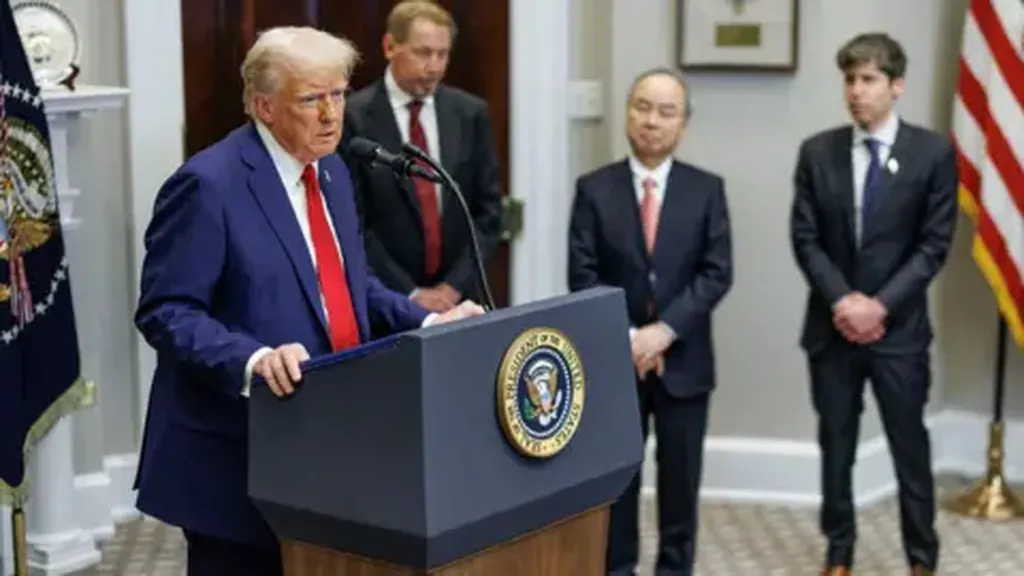The Trump administration’s 2025 industrial policy is steering the U.S. toward a future where technology and infrastructure intertwine in unprecedented ways. By prioritizing artificial intelligence (AI) and semiconductor manufacturing, the administration is not merely investing in sectors; it’s reshaping the economic and technological landscape. This strategic pivot could have profound implications for markets, global competition, and the very fabric of U.S. industry.
At the heart of this transformation is the Stargate project, a $500 billion initiative led by SoftBank, Oracle, and OpenAI. This ambitious endeavor aims to build AI infrastructure, including data centers and advanced computing clusters, while streamlining federal permitting processes. The project is projected to create 100,000 U.S. jobs and solidify American leadership in AI. The administration’s focus on AI infrastructure is not just about scale but also about security. By prioritizing development on federally owned land and ensuring energy resilience, the policy addresses both national security and economic competitiveness.
The push for domestic semiconductor manufacturing has attracted unprecedented private investment. NVIDIA, Micron Technology, IBM, and TSMC have pledged billions to expand manufacturing capabilities in the U.S. These investments are underpinned by executive orders that streamline permitting and offer financial incentives for projects exceeding $500 million in capital investment. This surge in private investment is a testament to the administration’s ability to align regulatory reforms with private-sector ambitions.
Data centers and cloud computing are also experiencing a new era of expansion. Amazon and Google have announced significant investments in cloud infrastructure and AI projects. These moves are critical for meeting the surging demand for hyperscale computing, driven by AI adoption and onshoring trends.
Next-gen infrastructure requires robust energy solutions. The administration is promoting public-private partnerships to modernize power generation and transmission, ensuring that AI and data center operations have access to reliable, low-cost electricity. This includes investments in renewable energy and grid modernization, aligning with broader efforts to decarbonize the economy while supporting industrial growth.
The success of these initiatives hinges on strategic alignment between policy and private-sector execution. By reducing regulatory hurdles and offering targeted incentives, the administration has created a fertile ground for capital flows to align with national priorities. This alignment is not just about economic growth but also about securing supply chains and maintaining global technological leadership.
As the U.S. navigates a rapidly evolving industrial landscape, the Trump administration’s focus on next-gen infrastructure underscores a clear message: the future belongs to those who build it. Investors and policymakers alike must recognize the transformative potential of these policies and the companies driving them. The implications for markets are vast. The alignment of strategic policy with private-sector investment could lead to a surge in innovation, job creation, and economic growth. However, it also raises questions about global competition, regulatory frameworks, and the long-term sustainability of these initiatives. As the U.S. positions itself at the forefront of technological advancement, the world watches closely, ready to adapt and respond to the seismic shifts unfolding in the heart of American industry.

